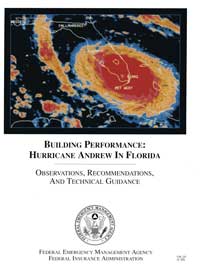MODULAR HOMES STRONGER THAN SITE BUILT, according to FEMA
Proponents of modular homes have long maintained that the building system produces structures that are far stronger than site built housing. For instance, the modular sections are well built to withstand the stresses of highway travel, containing up to 30% more building materials than a comparable site-built home. Drywall is often both glued and screwed to wall studs and triple-headers are used over window openings and around stairwells, to withstand the stress of transportation and being lifted by a crane.
Recently the Federal Emergency Management Agency (FEMA) confirmed that modular homes withstood a hurricane far better than site built housing. In its report "Building Performance: Hurricane Andrew in Florida," assessment teams from FEMA concluded that modular homes withstood the 131-155 mph winds of the Category 4 storm in August of '92 far better than site built housing.
"Overall, relatively minimal structural damage was noted in modular housing developments. The module-to-module combination of units appears to have provided an inherently rigid system that performed much better than conventional residential framing. This was evident in both the transverse and longitudinal directions of the modular buildings," according to the report. (Get your free copy by calling 800-480-2520, publication number FIA-22, item 3-0180)
